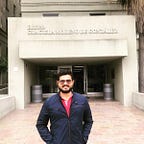The Virus Of Conflict
The pandemic and its capacity to generate war
“Bullet is just eating everything, leaves, trees, ground, person. Eating them. Just making people bleed everywhere.” Agu, Beasts of No Nation
Armed conflict has existed throughout the existence of human civilization. The beginning and end of most periods of our history have been determined by the outcome of armed conflict, from the clashes of the first human groups in search of better land to live and settle on, to the conflicts that began during the 20th century.
The majority of armed conflicts today take place within the borders of a single country, they are intra-state conflicts. This type of conflict is defined as “violence between one or more favored or disadvantaged minority or majority groups and one or more of those groups and the political/legal state to gain a greater share of limited resources or control or autonomy or both over the territorial state” [1]. This type of conflict will be addressed in this story.
Each armed conflict is unique and the causes vary by context, but they all have economic, social, political, or religious causes. These effects can be exacerbated or triggered by health crises, such as the current pandemic. COVID-19 and the events resulting from the global spread of the disease have had a significant impact on the emergence and escalation of intrastate armed conflicts around the world.
The pandemic has resulted in millions of cases and deaths worldwide. To mitigate the impact, governments around the world have taken steps to reduce person-to-person contact and thus infection. These measures include disrupting economic activity through massive “lockdowns”, canceling mass events, and closing businesses of all kinds. Another measure taken in various countries is the closure of borders or the imposition of restrictions on international travel, which is an important industry for many regions of the world.
The above has serious implications for the global economy, which shrunk by 4.4% in 2020 [2]. But how is this reflected in the day-to-day situation of societies? in rising unemployment, corporate insolvencies and increasing social inequalities, ultimately leading to a global increase in poverty that affects the middle and lowers social stratum. This context creates fertile ground for armed groups to recruit more people to strengthen themselves and expand their power. In addition, this health crisis has affected supply chains around the world, leading to food crises and an increase in the price of essential products for industry and daily life, a situation that can also exacerbate armed conflicts.
In the years that the health crisis has lasted, the government’s public and national security responsibilities were overloaded by the introduction of social distancing measures, the closure of public spaces or stores, and the use of masks. In addition to the responsibility for providing human and material resources to treat infected people in hospitals and communities, these measures have weakened the state’s ability to confront armed groups within its borders, a situation that they exploit to expand their control over territories and communities and illegally generate economic resources or overthrow the government.
On the African continent, the activities of insurgent armed groups have increased due to the distraction of national and international agencies by the global health situation. This happened in countries such as Libya, Mali and Nigeria, which suffered from conflict situations before COVID-19. On the other hand, in 2020, a new armed conflict emerged in Tigray province in Ethiopia, where confrontations between the government and the armed group “Tigray People’s Liberation Front” caused 52 thousand deaths and 150 thousand displaced people, putting more than 9 million people at risk due to lack of drinking water, medicines and food [1, 3, 4]. In 2020 and 2021, it was estimated that 44% of all active intra-state armed conflicts in the world were concentrated in Africa [5].
Mexico is another example of how armed groups have increased their presence and power because of the social and economic crisis caused by the pandemic. The impact of the epidemic has aggravated existing problems such as poverty and inequality, corruption, difficulty in providing justice and establishing peace, and the underfunding of public security institutions. The U.S. Army states that armed organized crime groups now control between 30 and 35% of the territory [6], and it is estimated that 31,000 people were displaced between 2020 and 2021 due to violence resulting from clashes between these groups and the government [7].
The statistics about intra-state armed conflicts around the world are alarming. According to the Office for the Coordination of Humanitarian Affairs, the use of weapons and explosives in clashes in densely populated areas has caused more than 10,000 child casualties, including 4,019 deaths and 6,164 children with mutilations. A 2020 report also mentioned that 79.5 million people in the world were forced to migrate due to the violence resulting from these armed struggles[5].
There is no doubt that COVID -19 poses a serious threat to world security and peace, but it is important to keep in mind that the true origins of armed struggles are deeper, broader, and have always been there: social injustices, the inability of governments to meet the basic needs of the population, guarantee human rights, and intolerance of the different ideas and cultures that exist.
